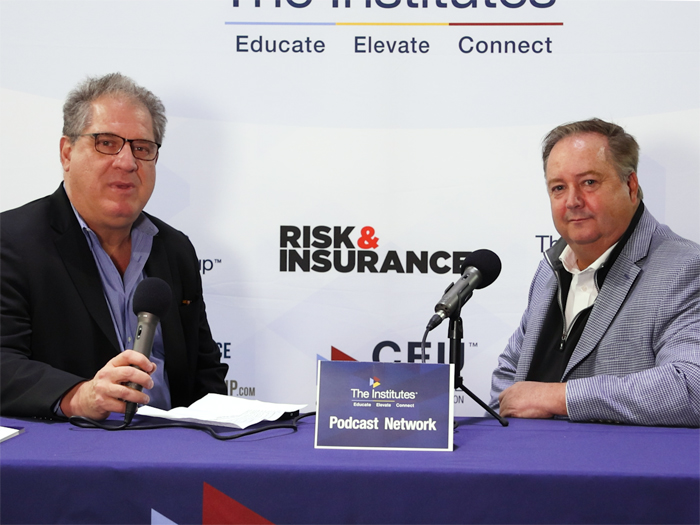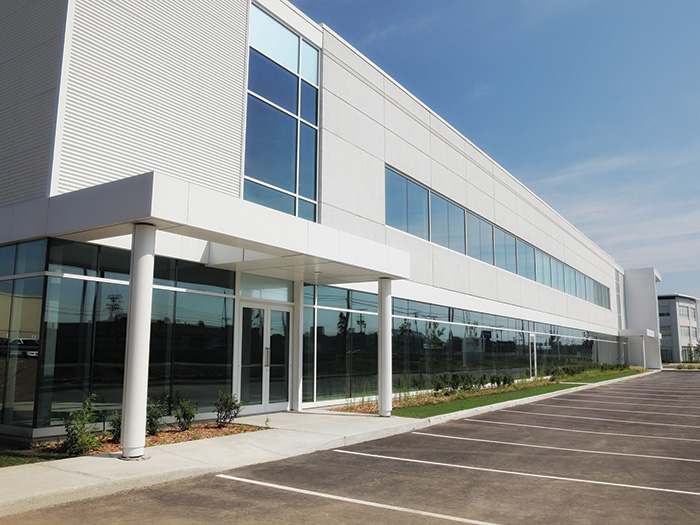7 Questions on Insurtech 2.0 for Madhu Tadikonda of Corvus Insurance

Madhu Tadikonda assumed the helm as Corvus Insurance’s new CEO after a year as president of the Insurtech.
Risk & Insurance® connected with Tadikonda to get his take on the current state of the Insurtech market and what the next phase of its advancement, Insurtech 2.0, may hold in store.
The following conversation has been edited for length and clarity.
Risk & Insurance: Insurtech companies with barely a decade in the commercial insurance arena are already having to downsize, in many cases. What’s driving their decline?
Madhu Tadikonda: As someone who spent a chunk of my career on the software, tech and investing side, I think back to Silicon Valley in 1999/2000: the dotcom bubble and euphoria … followed by its crash and aftermath.
I believe Insurtech has taken a similar journey.
First, there was a wave of initial Insurtech companies — deemed Insurtech 1.0 — which generated lots of optimism and hype. A bunch of companies were started, especially in the last five years, as people from outside the insurance industry started new businesses.
Investors got very excited about it; just as everyone loved adding “.com” to company names in 1999. It was attractive to people from outside the industry, because they saw the scale of just how large the addressable market was — ranging in the hundreds of billions for small business and homeowners’ insurance.
Plus, they saw how many century-old incumbent companies were around that seemed ripe for disruption.
However, what I think we’re seeing now is a bit of a reckoning, since it wasn’t quite so simple.
While there are certainly antiquated parts of insurance, not all aspects are ready for disruption. What these Insurtech 1.0 companies didn’t realize was that acquiring customers quickly and scaling at the pace of a software company proved to be a lot harder than it might have seemed.
Now, Insurtech 2.0 is the next stage of maturity. Companies, like Corvus Insurance, are going after specific pain points to make existing players more efficient or effective. Insurtech 2.0 is focused on areas, including emerging risk categories like cyber, where incumbents don’t have the data or tech capabilities to fill customers’ needs.
Even if cyber’s addressable market is a fraction of homeowners’, there are so many new buyers and more opportunities for technology to shape the market. Insurtech 2.0 companies are scaling by leveraging technology and underwriting capabilities in an effort to carve their own niche in the market.
All in all, you really have to find places where the current product doesn’t work, or if there are needs or risks that just can’t be underwritten or managed with the existing solutions. That’s played a role in how Corvus has ended up on the cyber side.
R&I: The terms of venture capital backing seemed to have rushed many Insurtechs to promise more than they were truly prepared to offer commercial clients. What role do you see venture capital playing in this next phase for Insurtech?
MT: It’s an interesting question, because I think that many people interpret this to mean that growth is more important than profitability.
However, an abundance of VC cash flow can sometimes hide the fact that a business model doesn’t really work.
In Insurtech, the huge amounts of venture capital raised did obscure that a bit — which real models worked and which didn’t. However, it takes time to understand the nuances of insurance and its many complexities.
For example, total addressable market (TAM) is a common industry phrase.
However, the industry has been trying to use premium in motion (PIM), which measures how much the market is growing. In other words, how many good accounts are available for a new entrant to get?
While homeowners’ insurance has a huge TAM, it’s actually very stable. Cyber, on the other hand, has a lot of new buyers, but the incumbents are not necessarily jumping in. This creates more opportunity for a new entrant, though that’s a subtlety that venture investors have to take time to understand.
With cyber, you need very different types of data to underwrite than traditional underwriters utilize. It’s also a unique model in that you have to stay in constant contact with your policyholders, which again, traditional incumbents don’t really do.
This is why this new wave of Insurtech 2.0 is poised to succeed and attract VC interest. Successful Insurtechs — like Corvus — are close to overall profitability, growing with good underwriting results, and avoiding loss-making accounts.
R&I: How are mergers and acquisitions influencing the evolution of the Insurtech space?
MT: We can consider the larger insurance carriers here — they have tons of distribution relationships and have huge balance sheets. They might offer all the other lines that a commercial insurance or policyholder needs.
So, is there a way to partner with them when it comes to cyber? They can offer the other lines in a way that’s much more cooperative, playing to both our strengths and theirs.
When Aon bought CoverWallet, a really well-run, disciplined company, it was very realistic about which parts of insurance could be disrupted and which ones couldn’t. It added a new capability to Aon, which has regular insurance brokers who go out and work more manually. CoverWallet is now helping complete what should be more straightforward and automated elements.
And so, there was a good recognition of, “Hey, there’s stuff that a new modern tech company can do and things they understand that are worthwhile, that can benefit a larger brand.”
But to get that, Aon and CoverWallet kept the teams and talent. They didn’t integrate CoverWallet into intergalactic Aon.
So there’s a lot of things a smart acquisition will have.
At the same time, there are so many great assets and capabilities of the big, existing players that figuring out how to partner with them will ultimately lead to some of these M&A opportunities.
R&I: Where do you see the next generation of Insurtechs gaining traction?
MT: It really comes down to Insurtechs being able to do something that incumbents just aren’t able, such as underwriting in a new way.
When it comes to cyber, for example, you have all different kinds of data about IT, threat actors and ransomware — all data points that just are not part of the typical insurance incumbents’ way of doing things.
To gain more traction, Insurtechs are also thinking about policyholder engagement differently, which is important amid rising consumer demand. Insurtech’s goal is to make current processes faster, better and more efficient.
For example, Corvus is constantly refining its existing tech while innovating and developing new solutions to address evolving cyber challenges. Our goal is to bring an efficient and transparent digital approach to risk capital partners while continuing to reimagine the broker and policyholder experience.
Insurtech’s broader view of overall risks ultimately gives customers greater visibility into their own risk and helps them to determine where to allocate spend.
I believe we’re already seeing the impact of empowering brokers, underwriters and policyholders with data-driven, always-on insights and adaptable policies when it comes to the increasingly complex and global cybersecurity landscape.
R&I: What lessons have the first generation of Insurtech companies learned about how to help insurers and brokerages innovate their processes within strict regulatory frameworks?
MT: Even people who are in the strictly defined fintech and banking industries — both of which are highly-regulated — are surprised by the level of regulation in insurance. One of the main challenges is that there are 50 different state regulators.
So, you have to figure out what works in Pennsylvania, what works in New York, what works in Texas, and manage all of those things perfectly. On top of that, there are a lot of considerations around rates — you can’t just price any way you want.
While it’s a tough barrier to entry, once you’re in and understand the regulations and how to operate and navigate through them all, it’s a good, protective environment. But it does, for a traditional startup, make the operating flexibility and scalability more difficult.
It also means that building the technology is more challenging, because it’s less of a one-size-fits-all approach.
The “good” entrepreneurs have started to figure that out. If you can navigate the highly regulated environment with a combination of people and technology, that’s your competitive edge.
R&I: In recent years, insurers and brokerages have been sponsoring incubators to develop new solutions. What role do you see those programs playing in addressing emerging P&C market challenges?
MT: Incubators are good for helping introduce entrepreneurs to the challenges within insurance and the issues present within the existing players. There are all kinds of opportunities to fix things, but an entrepreneur from outside the industry might not be aware.
It can be hard for some of these large-scale companies to really think about innovation and fold that into what they’re doing. The whole idea of innovation is that there are some marginal things that you need to work on and invest in, which take a long time to come to fruition.
The fact of the matter is, the insurance industry has historically been less comfortable and less open to disruptive innovation.
It really comes down to shifting mindsets and adopting a different way of thinking about innovation, especially in insurance. The ones who figure that out will be in a great position to succeed, even with changing market challenges in lines like P&C.
R&I: Is there anything else the risk management and insurance community should be keeping in mind as Insurtech enters its next phase?
MT: I’m seeing more and more that there are areas where customers and policyholders really don’t have enough support. Sometimes, unfortunately, the insurance industry isn’t quite as customer-centric as it could be.
Traditional insurance companies and their products are still in some ways all about, “How do I protect your factory? How do I protect your office? How do I keep your employee in the office safe when they slip and fall or get injured?”
A lot of the traditional products just don’t respond to or fit policyholders’ changing concerns — more often, their companies’ digital assets, especially with the rise in remote work.
I do think there is a huge need, and opportunity, for the insurance companies to rise to that challenge and meet the risks and worries of policyholders. If we don’t innovate to get that right, policyholders will find other ways to address their issues.
This is probably the number one catalyst for why innovation and disruption has to happen. If there’s an unmet risk or worry from policyholders, the insurance community needs to figure out a solution. &










